
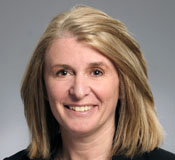
|
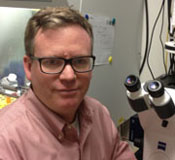
|
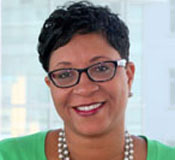 |
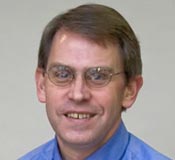
|
March 19, 2014
Whole-exome seqencing becoming better, cheaper, more routine
 |
Faced with a hard-to-diagnose neurologic or metabolic disorder, doctors increasingly are turning to a clinical diagnostic service called whole-exome sequencing, a tool that is fast becoming both more accessible and less expensive.
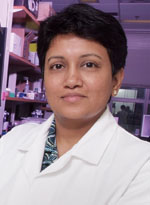 |
|
| Madhuri Hegde |
Whole-exome sequencing is a kind of "executive summary" of the patient's genome, or a scan of all the parts that are most important for diagnosing disease. Of all the DNA in the genome, for example, the exome consists only of the genes that are expressed somewhere in the body: just 1%. Within this 1% can be found 85% of disease-causing mutations.
Although whole-exome sequencing is a relative newcomer, having entered the scientific literature less than five years ago, it is already a brisk business, both at academic and commercial laboratories.
Emory Genetics Laboratory (EGL), a leader in the field, reports that its business in whole-exome sequencing has grown steadily since it began offering the service in 2012. The price for the service has decreased substantially in this time (from $9,000 to $6,000) and will continue to fall, says EGL executive director, Madhuri Hegde.
Neurologists and pediatricians from this country and around the world (largely outside Emory) make up most of EGL's volume, says Hegde, with some EGL business also coming from oncologists investigating inherited or sporadic cancers.
"This is now a mainstream tool for clinical diagnosis," she says, adding that insurance payers and institutions have been reimbursing the majority of the cost.
Whole-exome sequencing is also a growing source of research data. As new mutations are found, they are added to national databases such as ClinVar, run by the National Center for Biotechnology Information, to which EGL is a major contributor. "The more data we send them, the more accurate and powerful whole-exome sequencing becomes," Hegde says.
Although whole-exome sequencing has a relatively high "yield," providing an answer about the cause of a disorder 25% to 30% of the time, sometimes an even more targeted approach is better.
"Whole-exome sequencing has a better chance of obtaining a diagnosis for conditions such as intellectual disability or autism, but limited gene panels may be sufficient and less expensive for more specific conditions involving a neuromuscular or vision disorder, with a yield as high as 60%," says Hegde.
As EGL continues to enhance and customize its whole-exome service, it has also added to its targeted gene panel offerings.
In January, for example, EGL launched a new product called "Medical EmExome" (the "Em" is for Emory), which enhances the coverage of 4,600 of the body's 22,000 genes. These 4,600 are medically relevant genes that are known to cause disease when mutated.
EGL worked in collaboration with Children's Hospital of Pennsylvania and Harvard to create this product, which will give physicians more confidence in sequencing results, says Hegde. "It will also give researchers looking for new genetic links to disease more reassurance that mutations have not been missed."—Quinn Eastman
EHC and Children's launch congenital heart center
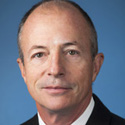 |
|
| Robert Campbell |
Children's Healthcare of Atlanta and Emory Healthcare are partnering to launch the Congenital Heart Center of Georgia (CHCG) to provide a continuum of care from before birth through adulthood for those with congenital heart defects (CHD). The CHCG is one of the largest programs in the country and the first in Georgia.
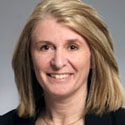 |
|
| Wendy Book |
"We treat CHD patients until adulthood and know that many of them do not continue care as they grow older," says Robert Campbell, chief of cardiac services at Children's Sibley Heart Center (SHC). "Many patients and their families wrongly believe that when a young person doesn't have symptoms after receiving good pediatric care that a 'cure' has been found. Unfortunately, treatment of these congenital diseases rarely results in a cure, and current medical guidelines recommend lifelong care and observation for these patients."
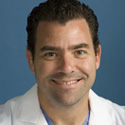 |
|
| Brian Kogon |
Campbell says that while little research has been done to quantify the problem in the United States, studies have shown that approximately 40% of CHD patients in Canada and Europe stop seeing heart specialists when they are between the ages of 13 and 21.
Under the newly formed center, Campbell and Children's SHC will work closely with Emory's Adult Congenital Heart Center, led by cardiologist Wendy Book, to help their CHD patients transition from pediatric to adult care.
Book and Campbell will lead the center, along with Brian Kogon, chief of cardiothoracic surgery at Children's SHC.
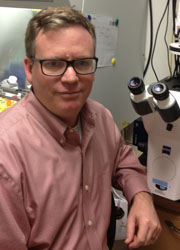 |
|
| Martin Moore |
Respiratory syncytial virus (RSV) is the leading cause of bronchiolitis, viral pneumonia, and viral death in infants both in this country and worldwide, and it kills 200,000 infants annually.
Pediatrics infectious disease researcher Martin Moore runs a lab that has developed two RSV model systems, including one to develop live attenuated RSV vaccine candidates. He has gone beyond basic research, however, to a creative type of lab entrepreneurism, inventing and distributing tools needed by other researchers to study RSV.
"We have a culture of invention in the lab," he says. "We talk about tech transfer every week, it's central to the lab, and I actually think it creates optimism and excitement for trainees in a time of prevailing pessimism due to funding."
These materials—largely research reagents and RSV strains—are licensed to companies for fees, which are generally small.
"I didn't actually expect this to become an alternative funding source," Moore says. "But it builds up. We had 18 licensures for revenue last year. Now companies have started contacting me—can we test our therapeutics in your mucogenic RSV mouse model, or will you generate this particular RSV strain for us? So, in addition to licensing, the research tool distribution has led to research contracts."
Intellectual Property Associate Clifford Michaels of Emory's Office of Technology Transfer (OTT) says Moore has created what he believes may be a model research lab of the future.
"Marty looks at his lab differently, in terms of, here we have an unmet need for a vaccine, but the problem is that there aren't good tools for people to use to make vaccines," Michaels says. "So he says, ‘Let me look at industry, let me make these tools to drive the whole field ahead.' "
The extra funding allows Moore to support post-docs in his lab, continuing the cycle of discovery and innovation.
"We have our own projects, basic science and vaccine development," he says. "But invention resonates with people. We invented something and got it to as many companies as possible to facilitate vaccines and antivirals, which is a lot better than having research materials just sitting in lab freezers."
Generating unique reagents is advantageous for NIH grants too. "Putting technology development at the front end of the goal of the lab, rather than seeing technology as a by-product of basic research, is enabling us to build an RSV and vaccine research program on multiple funding sources," he says.
Moore received the OTT award for innovation for 2013 (see story at right).—Mary Loftus
 |
Printer cartridges? Got it. Stamps? Yup. Resume paper for students? You bet. Wine for an event? Sure thing—red or white? Closing an off-site research office? We've got it covered.
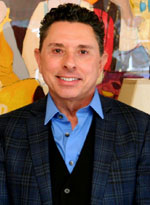 |
|
| Dean Surbey |
All this and more can be found in the one-stop-and-shop (Fulfillment Services) in the Rollins School of Public Health. It's an office supply store, a package store, an event hall, a print shop, and a post office, all rolled into one.
Fulfillment Services was the brainchild of Dean Surbey, RSPH's executive associate dean for finance and administration, who modeled it after a similar initiative at PricewaterhouseCoopers. Surbey and senior operations manager Vanda Hudson consolidated the school's administrative services after RSPH opened the Claudia Nance Rollins (CNR) Building in fall 2010.
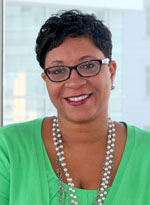 |
|
| Vanda Hudson |
"After we moved into the new building, the number of supplies that were being ordered was huge. People were stock-piling," Surbey says. Labs that were supposed to be cleaned out of the older Grace Crum Rollins (GCR) Building so it could be renovated (after the CNR opened) remained half full. Surbey and Hudson realized that these tasks could be done more efficiently if centralized.
Now all such endeavors go through Fulfillment Services, including any RSPH move or renovation, regardless of its location. It has its own software program for ordering supplies and processes all mail and deliveries through a system designed by Hudson, who used to work for FedEx. Foot traffic into the buildings has been reduced as various delivery companies all come to one office.
In the past three years, 32,904 packages came into the RSPH, 2,122 packages were couriered, and none was lost or misdelivered. Credit for the perfect deliveries goes to courier and office assistant Jerry Reid, Hudson says.
The office also helps manage the café in the GCR building and handles events in the RSPH's buildings, which became a bigger beast of burden than either Hudson or Surbey expected.
"We also became a conference center," Surbey jokes. The CNR's Lawrence and Ann Estes Klamon Room, with its expansive windows and city view, became the new hot spot for holding events. Some days there are up to three events scheduled, and Fulfillment Services manages them all. Only events with a connection to the RSPH get scheduled—the school has turned down wedding receptions, bar/bat mitzvahs, and Super Bowl parties.
Hudson and her staff stock beverages for events, schedule staff to be on-site, and work with catering vendors and housekeeping. Spring is the busiest time for events, and summer offers a nice reprieve before fall semester kicks into high gear.
While the school doesn't make money on the room rentals (it breaks even, with the staff overtime costs involved), it has kept office supply costs in check with its centralized system.—Kay Torrance
Leading change
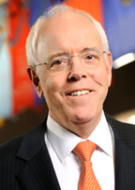 |
|
| Wright Caughman |
Unprecedented economic and policy forces are reshaping the nation's health care markets, and academic health centers (AHCs) such as Emory's Woodruff Health Sciences Center are challenged not only to weather the changes, but also to lead their implementation. For organizations as complex as AHCs, this imperative presents a host of challenges. In its latest report, A Call to Lead: The Case for Accelerating Academic Health Center Transformation, the Blue Ridge Academic Health Group offers comprehensive recommendations to help AHC leaders address those challenges.
The Emory-sponsored Blue Ridge Academic Health Group brings together AHC leaders from across the country to study and report on issues of fundamental importance to improving the health of the nation, our health care system, and the ability of AHCs to sustain progress in health and healing through education and research.
A Call to Lead, the group's 18th report, outlines dozens of specific recommendations in three key areas: strategies, structure and operations, and culture and people. The recommendations are the outcome of an August 2013 meeting in which the group assessed whether and to what extent the health care and insurance marketplaces are moving toward a value-driven system and whether and to what extent AHCs are leading and innovating in this new environment.
In addition to the comprehensive recommendations, the full report includes an overview of the economic forces affecting AHCs and their health care enterprises, a detailed discussion of the challenges AHCs face in the rapidly changing environment, and several illuminating case studies.
Thanks to the many leaders at Emory and at our peer institutions across the country who contributed to the report.
Please direct questions and comments to evphafeedback@emory.edu.
 |
New Yerkes director named
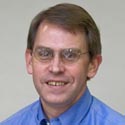 |
|
| Paul Johnson |
R. Paul Johnson was named director of the Yerkes National Primate Research Center, effective Aug. 1. Johnson currently serves as director of the New England Primate Research Center, chairman of its division of immunology, and professor of medicine at Harvard Medical School. Among Johnson's research interests is identification of immune responses that can protect against HIV infection.
"Analyzing protective immunity in macaques immunized with SIV is one of the best models we have to try to design better AIDS vaccines," says Johnson. "The focus of my work is determining what sort of immune responses can best protect people against HIV."
Stuart Zola, who has served as director of Yerkes since 2001, is stepping down to continue his research on memory. Read more.
Winship joins new NCI clinical trials network
Winship Cancer Institute is one of 30 cancer centers chosen to join the National Cancer Institute's new National Clinical Trials Network, which will serve as NCI's primary infrastructure to conduct phase 2 and 3 clinical trials. The distinction comes with a five-year award. Together, the sites will enroll more than 17,000 patients each year. The cancer centers will be managed by five network groups, one of which will be led by Walter J. Curran Jr, executive director of Winship, and Deborah Bruner, associate director of outcomes research at Winship. Read more.
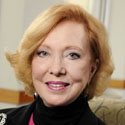 |
|
| Deborah Bruner |
The Blue Ridge Institute for Medical Research recently released its 2013 rankings for NIH funding. Deborah Bruner is the nation's top nurse researcher in total grant support from the NIH, with $2.8 million in grants in 2013. Of all NIH investigators, she is ranked in the top 2% for funding. Other rankings include the following:
Emory University - 19
School of Nursing - 10
School of Medicine - 16
Rollins School of Public Health - 10
Emergency Medicine - 6
Microbiology - 7
Neurology - 8
Pathology and Laboratory Medicine - 3
Pediatrics - 5
Radiation Oncology - 6
Surgery- 6
Walter J. Curran Jr, executive director of Winship Cancer Institute, is ranked 19th among principal investigator recipients of NIH research funding.
Blue Ridge was founded in 2006 by a former biochemistry professor at Louisiana State University, Robert Roskoski, who began calculating the metrics after the NIH stopped doing so. Roskowski works from his home in Horse Shoe, NC, whose setting inspired the name of his institute.
Johns returns to Michigan
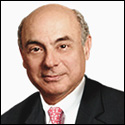 |
Michael M.E. Johns, former chancellor and executive VP for health affairs, will return in June to his medical school alma mater, University of Michigan, to serve as interim executive VP for medical affairs and interim CEO of the health system.
Technology and innovation for 2013
The following faculty were honored at the 8th annual Celebration of Technology and Innovation earlier this month:
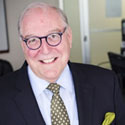 |
|
| Stuart Zola |
Start-up of 2013: Neurotrak (Stuart Zola, Yerkes director, and Cecilia Manzanares, neuroscience, Yerkes, as well as Eugene Agichtein and Dmitry Lagun in math/computer science)
Deal of 2013: QUE Oncology (Hyunsuk Shim, radiology, and Mary Galinski, infectious diseases and global health, Yerkes, as well as Dennis Liotta and Jim Synder in chemistry)
Innovation of 2013: RSV vaccine technology (Martin Moore, pediatrics, see related article)
Notable
For the second year in a row, Bill Bornstein, EHC chief medical officer, is on the Becker Hospital Review list of top 100 CMOs to know.
Carolyn Clevenger (nursing) was named a fellow of the American Association of Nurse Practitioners.
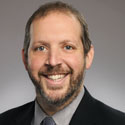 |
Jonathan Kaufman (hematology-oncology) was named medical director of the ambulatory infusion centers at EUH Midtown, Emory John's Creek Hospital, Emory Saint Joseph's Hospital, and Winship Cancer Institute.
Thomas Lawley (dean emeritus, medical school) received the Charles R. Hatcher Jr. Award for Excellence in Public Health from the Rollins School of Public Health.
David Stephens (VP for research in the Woodruff Health Sciences Center and chair of the Dept of Medicine in the medical school) has been elected a fellow of the American Academy of Microbiology.
Events
March 22-29: Atlanta Science Festival. Event details.
March 25: Healthcare Innovations Symposium X: The Evolving Patient-Physician Interface. James Madara, CEO, American Medical Assn. 4:30-6:30 p.m., EUH auditorium. Register.
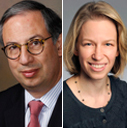 |
March 26: Can We End the HIV/AIDS Epidemic? Carlos del Rio and Wendy Armstrong (Life of the Mind Series). 4 p.m., Jones Room, Woodruff Library.
March 26: A Strategic Framework for Fixing Health Care. Thomas Lee, chief medical officer, Press Ganey. 4:00 p.m. EUH auditorium.
March 27: Design Research Aims Around Commercially Relevant Milestones. Session 2, OTT Innovator Series. Health Sciences Research Bldg. More info. RSVP.
April 24: 5th Annual Academic & Industry Intersection Conference, 8 a.m. - 1 p.m., Georgia Tech Research Institute Conference Center, agenda/schedule.
May 1: 1st Biennnial Academy of Medicine Distinguished Lecture by Joseph Hubbell, 4 p.m., Academy of Medicine Bldg, 875 W Peachtree St. NW. RSVP.
